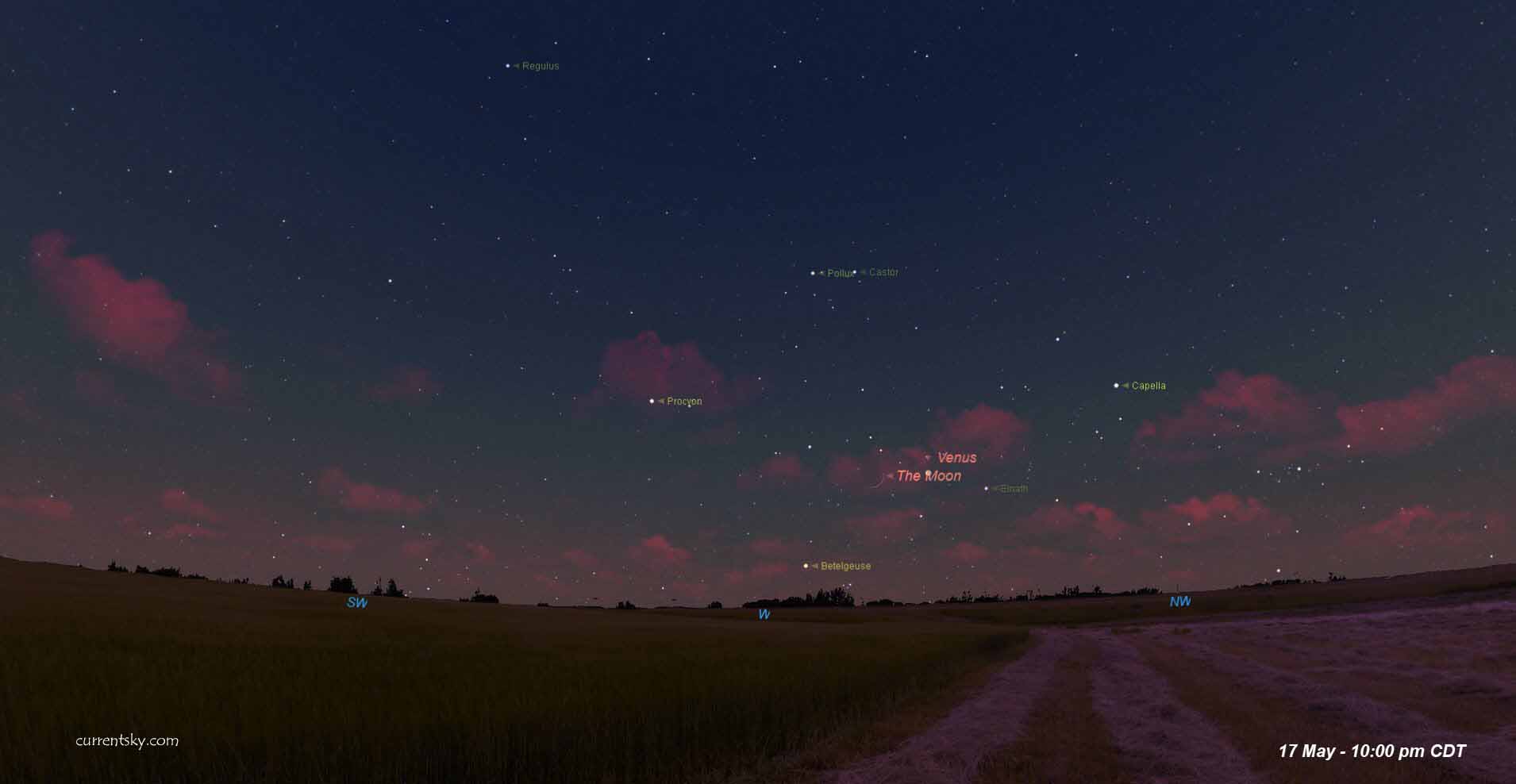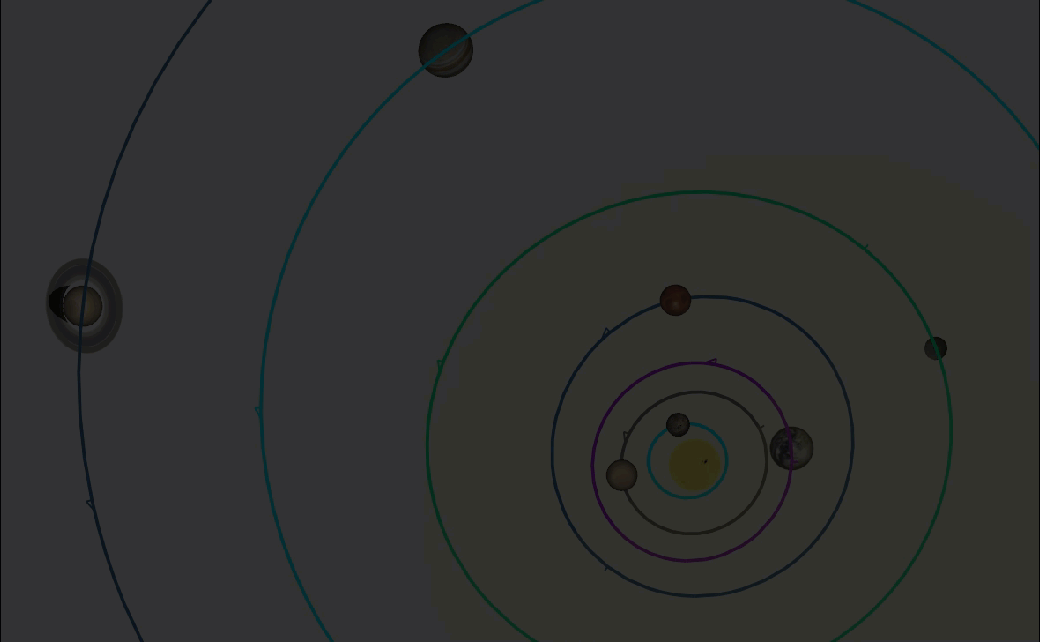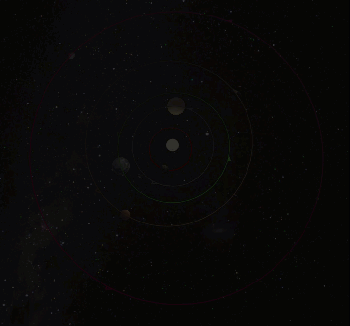May 2018
This month Mercury reappears in the morning skies before sunrise and while somewhat low over the horizon Mercury will remain visible for most of the month. Rising well ahead of Mercury is the 'red planet' Mars followed an hour or so later by Saturn. Both are well placed and easily seen over the east-southern horizon in the hours before sunrise. Jupiter reaches opposition this month so it will be visible all night as it rises at around sunset and sets at around sunrise. Jupiter is also the closest to the Earth for the year as it comes within about 4.4 AU (409,005,552 miles; 658,230,631 km).
Click here for the month at a glance calendar.

The 2.6-day young waxing crescent Moon about 3o from the planet Venus.
Mercury spends much of this month over the eastern horizon an hour or so before sunrise local time.
Venus is very visible over the western horizon at sunset local time. Watch this inner planet as it moves eastward away from the Sun and passes through the constellation of Taurus the Bull and crosses the feet of the Gemini Twins.
Mars rises a couple of hours after midnight local time and is over the eastern to southern horizon the remainder of the night hours.
Dwarf Planet Ceres slowly moves eastward near the stars making the top curve of Leo's 'backward question mark'. However with a dim magnitude of 7-8th the dwarf planet will be hard to see.
Jupiter reaches opposition this month and will be rising around the local time for sunset and be visible the remainder of the night hours, setting around local sunrise time.
Saturn rises a couple of hours after midnight local time and about an hour before Mars and is over the eastern to southern horizon the remainder of the night hours.












 Above the Solar System at 10 day Intervals
Above the Solar System at 10 day Intervals

 Lee's Summit, MO
Lee's Summit, MO 